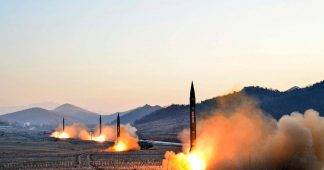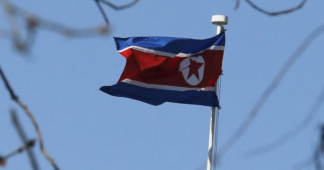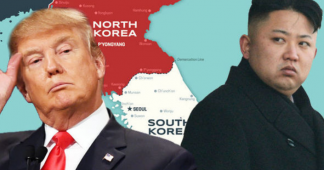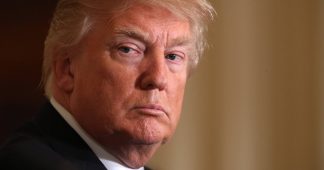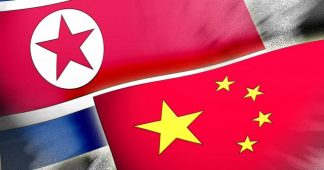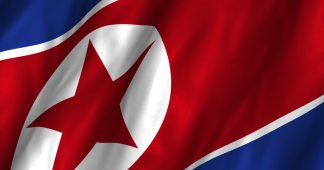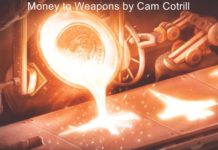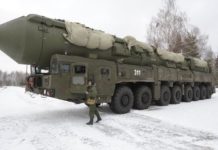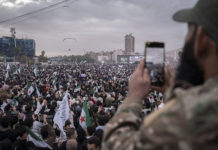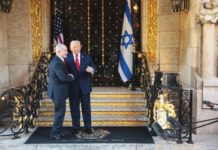The Lumiere Brothers Center for Photography in Moscow hosts the exhibition (Im)possible to See: North Korea until September. Bird In Flight talked to Philippe Chancel, a French documentary photographer whose works are also exhibited there, about what’s going on in the most closed country of the world.
“DPRK is a country of all-pervading secrecy. The USSR in the Stalin times is almost an open society in comparison,” an expert on North Korea Andrei Lankov wrote. Sale of radios with free tuning is prohibited in North Korea: the radios that are distributed by vouchers are tuned only to the Pyongyang radio station. A Korean person has no access to newspapers or magazines from other countries, access to foreign literature is restricted. The Internet is only for the use of experts, and their actions online are strictly controlled. The country still performs public executions.
Since the late 1970s, all adult Korean have to wear badges with Kim Il-sung. The portraits of the leader are obligatory for every room of every institution, factory shop, classroom, and lecture hall. Even the unintentional damage done to the portrait of the Great Leader may have grave consequences for the perpetrator.
Philippe Chancel’s photographs from North Korea reminds of the images of the Soviet Union in the 1970-1980s. However, the French photographer says that the attitude of Koreans to their regime is different than that of the Russians or people in Cuba who habe lived under a socialist regime for a long time. Koreans can’t afford to laugh at their regime or their leaders. In his series, Philippe Chancel investigates what it’s like to remain true to Communist ideas in the 21st century.

Philippe Chancel
Documentary photographer from Paris. Studied economics at the Paris Nanterre University and journalism at the CFJ in Paris. Worked on documentary projects in Europe, the US, Afghanistan, North Korea, Japan, Africa, the Arab world. His series DPRK was presented at the Les Rencontres d’Arles festival in 2006 and C/O Berlin exhibition. In 2015, took a series of portraits of people in the DPRK called Kim Happiness.
— Some journalists resort to subterfuge and join different parties and societies with the aim of receiving authorization to shoot in places which are closed of for ordinary tourists. Did you receive authorization before entering North Korea?
— I witnessed the decline of the socialist regime in Europe: I worked in the Soviet Union, Poland, Bulgaria, Romania, Czech Republic. I learnt from my former experience that visitor visa offers an opportunity to work in the Communist bloc. My contact, who lives in South Korea and knows Korean very well invited me like a foreign artist. He helped me get a commission for documenting North Korea.
I visited the country a number of times, first between 2005—2007, then a few times in 2012, when Koreans celebrated the birthday of Kim Il-sung, and finally in 2015. In my first visit, I tried to reach the inlands and find out what would be accessible for shooting. I didn’t ask for the moon and didn’t try to lift the veil on life in the closed country. I decided to photograph approachable events. I thought that my viewers would decrypt some other issues.





Pyongyang Theater, 2006

Party Foundation Day (October 10), Pyongyang, 2006
— Did state security officers look through your work? How strict was the control by state security?
— I was sure that control over my images would be total but it was far from it. The security officer and I had trust-based relations. He kept strict watch over me when I worked on the Arirang series. When the country’s leader attended mass performances, I could photograph him in only one pose, which is the authorized pose to shoot. I don’t know why but the security officer gave me some leeway. That can be explained by official approval of the ideas of my project. They were not contrary to propaganda. My vision of the country worked for propaganda.
— Why are you interested in mass performances?
— Before all I was interested in the Communist bloc, for me North Korea is the last museum of communism where journalists and tourists can find a way. Mass performances were good visual material and provided a glimpse of propaganda. They attract your attention like an action movie; sometimes I felt like an actor who took part in a movie about North Korea. After shooting Arirang I could imagine how the machine of propaganda worked in the 20th century in the Eastern bloc. I could imagine how a totalitarian regime was established in the Soviet bloc where I caught the decline of socialism.

From the Arirang series. May Day Stadium. Pyongyang, 2006.

From the Arirang series. May Day Stadium. Pyongyang, 2006.
— Did this experience exert influence on your attitude towards the Eastern bloc? Did your attitude leave a personal stamp on your images from North Korea?
— I didn’t want to make a judgement on North Korea. I tried to be neutral in my images and give the possibility of judgement to my viewers.
I didn’t want to fixate on pathology, horrific images and did my best to give a clear picture, to show what I saw. American photographer Lisette Model wrote: “The most mysterious thing is a fact clearly stated”. When I worked in North Korea I often thought back on her words. These words convey my attitude towards the images. And also it is very true of the country. North Korea looks clear and bright, but it is impossible to gain an insight into its mystery.
— Did you witness something going wrong or somebody making a mistake during the mass show?
— I didn’t see it, but I lost touch with my friends from North Korea who made a mistake during the show. They paid for their mistakes with their lives. I know what happens if a show fails.

From the Arirang series. May Day Stadium. Pyongyang, 2006.

From the Arirang series. May Day Stadium. Pyongyang, 2006.
— Why in your latest series Kim Happiness did you decide to move from mass performances to intimate portraits?
— I decided to move from general to close-up view, to details. It’s like in the cinema, a filmmaker turns from one to another view. So to speak, I am making a movie about North Korea.
Let’s face it — in modern photography you should have instinctive reaction. You begin shooting because it touches you, and after that you look at pictures and analyse why you did it. In 2015, I wanted to make a series of staged portraits and didn’t understand why. Maybe later I’ll find better explanation for this.
— When you worked on Kim Happiness, you must have talked to your models about the regime, about life in the country. What was their attitude towards the political order?
— If you compare the Koreans and the Cubans who are also from the socialist camp, the Koreans take political order in the country very seriously. They don’t allow themselves any jokes about the regime. They are very proud of the fact that they were born and live in that country. Life in the country with another socio-political formation frightens them. They think that only one way is right, only one way is possible, and it’s the way of socialism. Kim Jong-un is a star for the Koreans, like Hollywood’s leading actors for the Americans. But the Americans decide who will be a star, the Koreans take it for granted.


— Did you want to focus on the attitude towards the regime in North Korea?
— No, it’s much more complicated. I wanted to show people who live in another world, who have no Internet and mass media that is under control of state security. On one side they are ordinary people like you and me, they think about going away for the weekend, bringing up children, keeping the house clean, on another side they have quite another existential experience.
— You visited North Korea many times, could you say that you managed to reveal a secret about this country?
— The famous French journalist Philippe Pons from the newspaper Le Monde calls North Korea the most unknown country in the world. It’s very true. With this country, when you thought that you’d found some gate, you open a new mystery.
